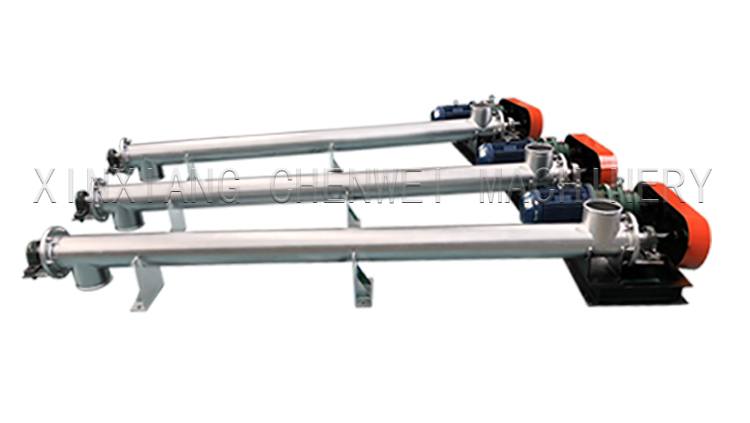(1) Strong magnetic minerals Its material specific magnetic susceptibility; c is greater than 3000 × 10-6 meters. /g. Magnetic field strength H may be selected in a 7200 ~ 136 000 A / m of weak magnetic separator, the material is easy to beneficiation. Few of these minerals, the main magnetic iron ore, maghemite (gamma] hematite), titanium magnetite, pyrrhotite, zinc ferrite, etc., most of these minerals belonging ferrimagnetic substance. (2) Medium magnetic mineral The material magnetic ratio x is between (600 ~ 3000) × 10-6 cm 3 / gram. Only ilmenite and imaginary hematite belong to this type of mineral. The selection of such minerals requires the use of a magnetic separator with a magnetic field strength H of 160,000 to 480,000 amps/meter. (3) weak magnetic minerals whose material ratio is magnetic susceptibility) (between (15 ~ 600) × 10-6 cm 3 / gram, can be selected in a strong magnetic separator with magnetic field strength H = 480000 ~ 160,000 amps / m) . the most out of these minerals, including easy to choose, but also difficult to choose are: most of the iron-manganese mineral - hematite, hematite, limonite, siderite, water manganese ore, manganese ore, Hard manganese ore, rhodochrosite, etc.; some minerals containing chromium , tungsten, chromite, black serpentine, olivine, garnet, pyroxene, etc. Most of these minerals are paramagnetic and also antiferromagnetic. (4) Non-magnetic minerals The material magnetic ratio is less than 15<10-6 cm3/g. Such minerals are many, the main part of the metal minerals - Hui copper ore, galena, sphalerite, stibnite, scheelite, cassiterite, gold, etc., most of the non-metallic minerals - sulfur, coal , graphite , diamond , gypsum , kaolin, etc., most of the rock-forming minerals - quartz , feldspar , calcite and so on. Some of these minerals are paramagnetic and some are antimagnetic. The so-called non-magnetic minerals are not absolutely non-magnetic, but only very small. The magnetic field strength that can be achieved in current magnetic separators cannot be selected, so it is called non-magnetic minerals. The above classification is roughly classified under the conditions of modern technology, because there are many factors affecting the magnetic properties of minerals, even if the magnetic properties of different mineral origins are not identical. It should be noted that as magnetic separation technology develops, the boundaries between weak magnetic minerals and non-magnetic minerals will change. The lower limit of the magnetic permeability of weak magnetic minerals is decreasing, which is an inevitable trend in the development of magnetic separation.
Introduction of Screw Conveyor
Screw conveyors, also known as auger conveyor,Spiral Conveyor, are made for simple conveying duties applications. The real strength of our company, however, is our ability to produce individually designed units that include features to overcome awkward installations, materials that are difficult to handle, or include performance or process functions beyond simple conveying. Some requirements may be concerned with aspects of hygiene, others with bulk solids that have poor or delicate conveying properties.
Screw conveyor is divided in two types rigid screw conveyor and shaftless screw conveyor.
Rigid screw conveyor is suitable for non-sticky powder and small particle material such as cement, fly ash, lime, flour, starch, food additive etc.
Shaftless screw conveyor is suitable for sticky and easy winding materials such as sludge, biomass.
Features of screw conveyor
*Tube type and U shape type available
*It can be designed inclined conveying,horizontal conveying and vertical conveying.
*Widely used for all kinds of powder,particles,small block and loose material.
*not suitable for conveying perishable material,high viscosity,less pressure resistant material.
*not suitable for agglomerate or high temperature material.
*not suitable for great corrosive special material and fragile material.
Warranty
Our machines have an automatic 12 months guarantee against faulty material and workmanship valid from the date of dispatch in China or date of arrival at foreign border.
If any problem of the machine under instruction within one year,we are responsible for replacement incuding delivery fee and maintenance.
Lifelong service is offered with cost charge after one year.
Screw Conveyor Screw Conveyor,Spiral Conveyor,Small Screw Conveyor,Industrial Screw Conveyors XINXIANG CHENWEI MACHINERY CO.,LTD , https://www.sieves.nl![]()
![]()
Minerals are classified by magnetic basis as the specific magnetic susceptibility . When the magnetic separation is separated, the larger the difference in the specific magnetic susceptibility of the mineral, the easier the separation. According to the specific magnetic susceptibility of minerals, all minerals can be classified into the following categories. (1) ferromagnetic minerals; (2) medium magnetic minerals; (3) weak magnetic minerals whose material specific magnetic susceptibility) (between (15 ~ 600) × 10-6 cm 3 / gram, in the magnetic field strength H = It can be selected from the strong magnetic separators of 480,000 to 1,600,000 amps/meter.
